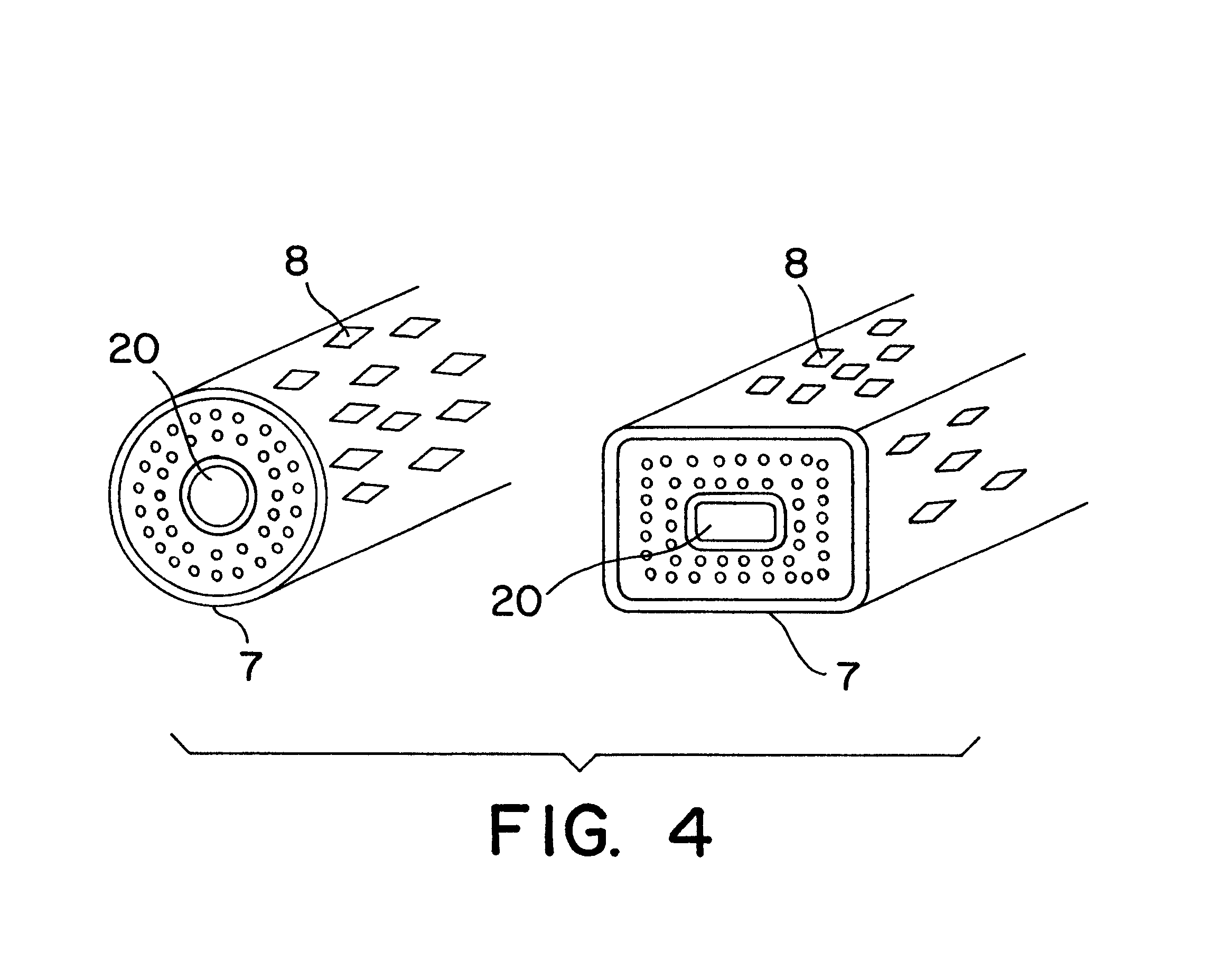Process for making constrained filament niobium-based superconductor composite
a superconductor and filament niobium technology, applied in the field of fabrication of a15 conductors, can solve the problems of nb loss, method obsolete, and time for infiltration should be very shor
- Summary
- Abstract
- Description
- Claims
- Application Information
AI Technical Summary
Benefits of technology
Problems solved by technology
Method used
Image
Examples
example ii
In Example I, a continuous sheath, as shown in FIG. 2, was employed and at the final size the conductor was mechanically perforated as shown in FIGS. 3a and 3b to allow for the removal of the copper matrix by acid leaching followed by liquid tin infiltration at high temperatures. It was also shown that the sheath can be applied separately after the conductor has been fabricated by means of taping FIG. 5, Braiding FIG. 6, or by mechanically confining the conductor into a support structure as shown in FIGS. 7, 8 and 9.
A simpler and considerably less expensive method has been found which accomplishes the same objective. The sheath is constructed exactly as in Example I except now a narrow opening is left which is parallel to and runs the length of the filaments shown in FIG. 10.
The size of the opening can be adjusted to permit rapid copper removal of the matrix by acid leaching and still retain the sheath's ability to constrain and support the filaments. Following the final reduction, ...
PUM
| Property | Measurement | Unit |
|---|---|---|
| thickness | aaaaa | aaaaa |
| magnetic fields | aaaaa | aaaaa |
| temperatures | aaaaa | aaaaa |
Abstract
Description
Claims
Application Information
 Login to View More
Login to View More - R&D
- Intellectual Property
- Life Sciences
- Materials
- Tech Scout
- Unparalleled Data Quality
- Higher Quality Content
- 60% Fewer Hallucinations
Browse by: Latest US Patents, China's latest patents, Technical Efficacy Thesaurus, Application Domain, Technology Topic, Popular Technical Reports.
© 2025 PatSnap. All rights reserved.Legal|Privacy policy|Modern Slavery Act Transparency Statement|Sitemap|About US| Contact US: help@patsnap.com



